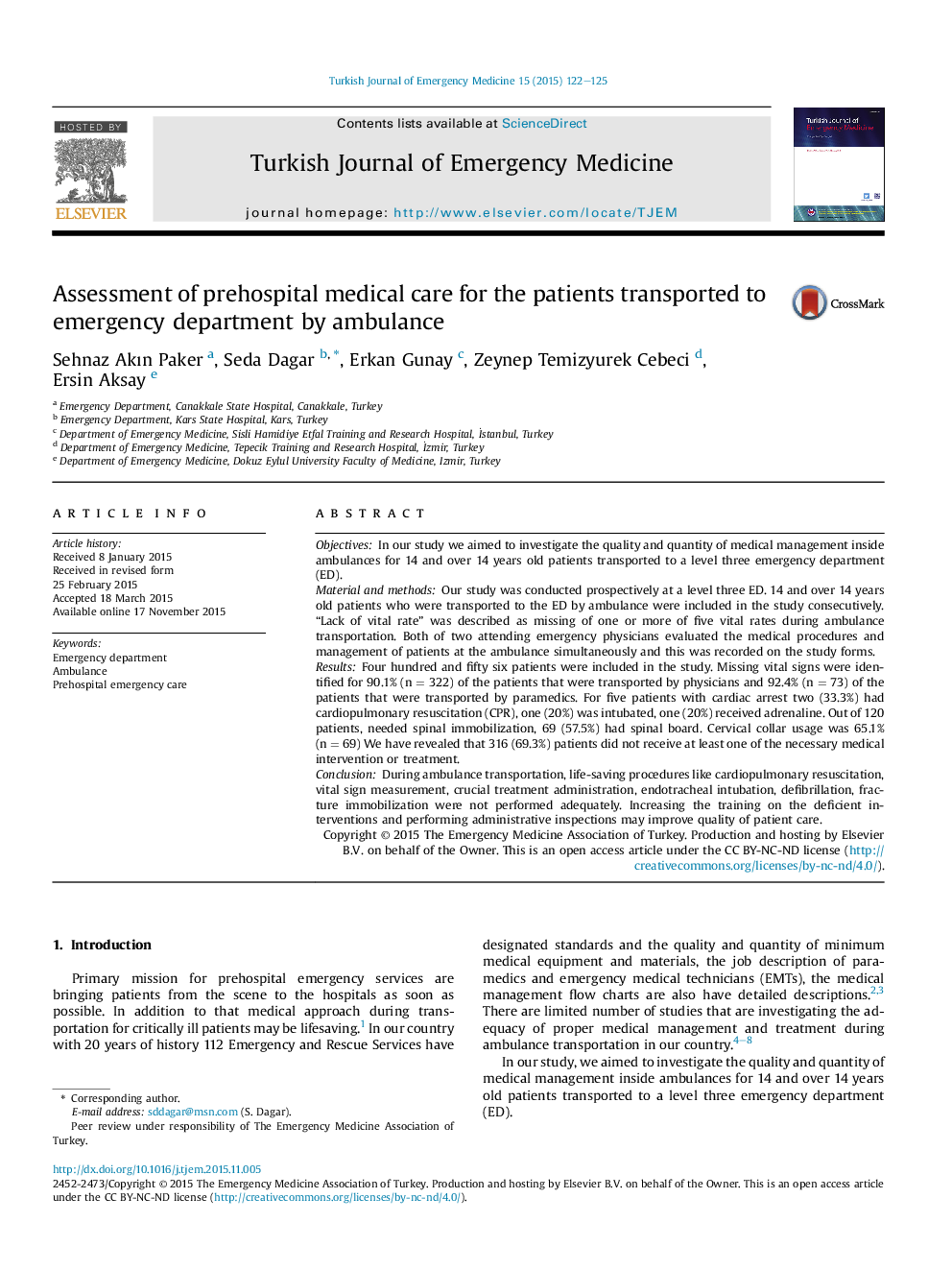| Article ID | Journal | Published Year | Pages | File Type |
|---|---|---|---|---|
| 2604129 | Turkish Journal of Emergency Medicine | 2015 | 4 Pages |
ObjectivesIn our study we aimed to investigate the quality and quantity of medical management inside ambulances for 14 and over 14 years old patients transported to a level three emergency department (ED).Material and methodsOur study was conducted prospectively at a level three ED. 14 and over 14 years old patients who were transported to the ED by ambulance were included in the study consecutively. “Lack of vital rate” was described as missing of one or more of five vital rates during ambulance transportation. Both of two attending emergency physicians evaluated the medical procedures and management of patients at the ambulance simultaneously and this was recorded on the study forms.ResultsFour hundred and fifty six patients were included in the study. Missing vital signs were identified for 90.1% (n = 322) of the patients that were transported by physicians and 92.4% (n = 73) of the patients that were transported by paramedics. For five patients with cardiac arrest two (33.3%) had cardiopulmonary resuscitation (CPR), one (20%) was intubated, one (20%) received adrenaline. Out of 120 patients, needed spinal immobilization, 69 (57.5%) had spinal board. Cervical collar usage was 65.1% (n = 69) We have revealed that 316 (69.3%) patients did not receive at least one of the necessary medical intervention or treatment.ConclusionDuring ambulance transportation, life-saving procedures like cardiopulmonary resuscitation, vital sign measurement, crucial treatment administration, endotracheal intubation, defibrillation, fracture immobilization were not performed adequately. Increasing the training on the deficient interventions and performing administrative inspections may improve quality of patient care.
